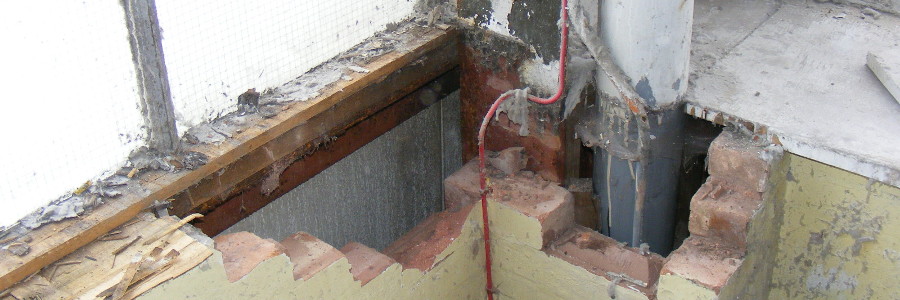If during the course of on-site works you discover materials which you believe to be asbestos or there is an event that results in an uncontrolled release/ accident involving asbestos, you must stop work immediately. There are some simple steps that can be taken to minimise the risk of exposure to asbestos. Your emergency procedures should include managing an uncontrolled release of asbestos materials into the workplace. In accordance with regulation 15 of the CAR 2012 employers should have emergency procedures in case of the accidental release of asbestos into the workplace.
Steps to be taken should include:
- The area must be evacuated and designated as a restricted area. Put up appropriate warning signs and ensure nobody enters the area. Only persons wearing appropriate RPE and PPE must be allowed to enter the area.
- Make sure there is no unauthorised access of persons to the affected area.
- Whereas a result of the incident, operatives may have asbestos debris on their clothing, reassure them, do not allow movement of operatives through the workplace but where possible take outermost clothing off and bag, dampen down remaining clothing. Provide clean coveralls or similar for an operative to wear. Take the shortest route to the outside of the building. Consideration to be made in respect of providing RPE to the individual pending the circumstance of the incident.
- Warn anybody who can be affected by the incident to minimise further exposure to asbestos
- Where possible, arrange for the isolation of ventilation systems common with the affected area.
- Report the incident as soon as possible to the appropriate person, site Asbestos Duty Holder, Project Manager or shift Manager.
- Arrange to have representative bulk samples taken by a qualified surveying organisation to establish the extent/ spread of asbestos.
- Consider engaging a UKAS accredited laboratory to carry out representative reassurance air monitoring in areas adjacent to where the asbestos has been damaged to assess and advise on the continued operation or not of these areas.
- Where analysis of materials confirm asbestos is not present than work can continue.
- However, if the material does contain asbestos decide if the work needs a licensed contractor. Alternatively, you could presume that the material contains asbestos and apply the appropriate controls, using a licensed Asbestos Removal Contractor if required.
- The clean-up of any accidental release of higher risk materials, eg. asbestos lagging, loose-fill, asbestos coatings (not textured coatings) or large-scale releases of AIB, must be done by a licensed Asbestos Removal Contractor. (ie Instruct a licensed asbestos removal contractor to carry out essential asbestos works if required based upon risk assessment).
- Only re-occupy the area when the asbestos has either been removed or made safe and the UKAS accredited laboratory confirms that it is safe to do so. It may be that a certificate of re-occupation requires to be issued based upon licensable works where a 4-Stage clearance has been carried out by the UKAS accredited laboratory.
- Once the incident has been resolved, investigate what caused the disturbance of asbestos materials in the first place and identify corrective measures to be implemented to prevent a similar re-occurrence in the future. (ie a lot can be gained from lessons learnt).
- Update the site asbestos register/ management plan so it remains fit for purpose.
- Accidental disturbance and release of asbestos must be dealt with quickly and appropriately to protect the workforce and visitors to the premises.
Please contact OMC consultants through either our personnel or contact pages.
We are happy to listen and advise you to help meet your business needs.
